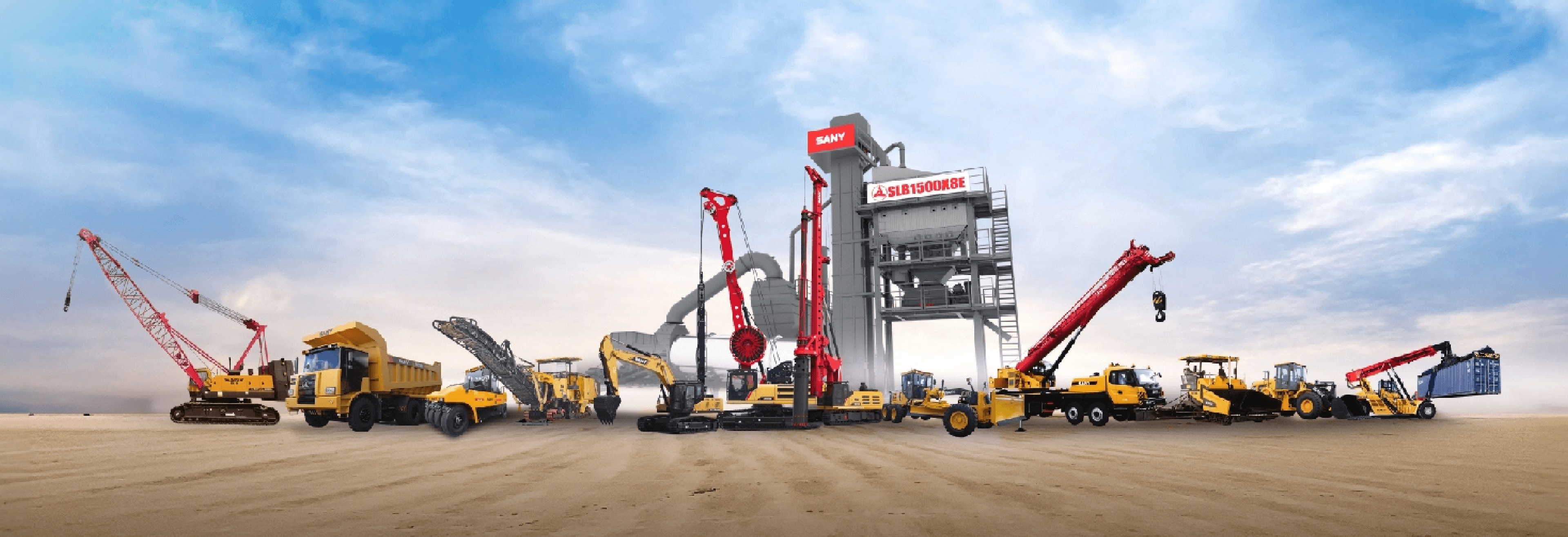LATEST Blog
Blog Categories:
All Blog:


The Advantages of Mini Excavators in Construction Operations
heir larger counterparts. Just as a knife excels in precision tasks that a sword would find difficult to handle, these small excavators are perfect for navigating tight spaces, making them indispensable for urban construction projects. These underdogs of the construction world pack a powerful punch despite their small size. Keep reading to discover how mini excavators are making a big impact on construction projects of all sizes. What are the Different Varieties of Mini Excavators? Here are the different varieties of mini excavators based on their size ranges: Small Mini Excavators: Comprising the majority of available models, small mini excavators typically offer dig depths ranging from 5 to 10 feet and dump heights between 6 to 11 feet. With horsepower ranging from 10 to 40 hp, these agile machines, weighing approximately 900 to 4,500 kg, excel in tight spaces and delicate foundation work. Medium Mini Excavators: Medium compact excavators display impressive dig depths up to 15 feet, dump heights reaching 21 feet, and engine power up to 74 hp. Weighing between 4,500 to 9,000 kg, these machines offer versatility across various construction projects, often matching or exceeding larger classes in performance. Large Mini Excavators: Though fewer in number, large mini excavators achieve dig depths exceeding 17 feet and maximum dump heights of 20 feet, with horsepower ranging from 69 to 75 hp. Weighing over 9,000 kg, these powerful machines are ideal for projects requiring substantial force, ensuring efficiency in demanding construction tasks. What is a mini excavator used for? Mini excavators are versatile machines used for various construction, landscaping, and utility tasks. Some common mini excavator uses include: Digging: Mini excavators excel at digging tasks, including excavating foundations, trenches for utility lines, or holes for landscaping features like ponds or trees. Demolition: With the right attachments, mini excavators can be used for selective demolition tasks, such as breaking up concrete, removing small structures, or clearing debris. Landscaping: Mini excavators are invaluable for landscaping projects, such as grading terrain, shaping slopes, installing retaining walls, or creating garden beds. Utility Work: They are often employed for installing underground utilities like water pipes, sewer lines, electrical conduits, and drainage systems. Material Handling: Mini excavators equipped with grapples or buckets can efficiently handle materials like gravel, soil, sand, and debris, making them useful for loading and unloading trucks or moving materials around a job site. Site Preparation: Mini excavators can be used to clear…
read more

How to Select the Best Material Handling Equipment Manufacturer?
When it comes to material handling equipment, choosing the right manufacturer can make all the difference. High-quality equipment can streamline your operations, improve efficiency, and reduce costs. However, with so many manufacturers out there, how do you determine which one is the best for your needs? This guide will provide you with essential criteria to consider when selecting top material handling equipment manufacturers, including insights into Sany's product offerings, specifications, and details. Criteria for Choosing the Best Material Handling Equipment Manufacturers 1. Innovation and Technology Innovation is a key factor in determining the quality of material-handling equipment. Manufacturers that prioritise research and development (R&D) tend to offer more advanced, efficient, and durable products. Look for manufacturers that integrate the latest technology in their equipment, such as automation, IoT (Internet of Things), and AI (Artificial Intelligence). 2. Product Quality and Durability The quality and durability of the equipment are paramount. You need equipment that can withstand harsh working conditions and deliver consistent performance over time. Evaluate the materials used, the manufacturing process, and the overall build quality of the equipment. 3. Range of Products A diverse product range indicates a manufacturer's capability to meet various material handling needs. Check if the manufacturer offers a wide selection of equipment types, such as forklifts, cranes, conveyors, and excavators, to cater to different industries and applications. 4. Customer Service and Support Excellent customer service and support are critical when selecting a manufacturer. This includes pre-sale consultation, after-sale service, maintenance, and parts availability. A responsive and supportive customer service team can significantly enhance your equipment's lifecycle and operational efficiency. 5. Reputation and Reliability A manufacturer's reputation in the market is a strong indicator of its reliability. Research customer reviews, testimonials, and case studies to gauge the experiences of other users. Additionally, check for industry awards and recognitions that highlight the manufacturer's credibility. 6. Cost-effectiveness While the initial cost of material handling equipment is important, it’s crucial to consider the total cost of ownership. This includes maintenance costs, energy efficiency, and the potential for downtime. Opting for slightly more expensive equipment that offers better performance and lower operational costs can be more economical in the long run. 7. Customisation Options Different operations have unique requirements, and the ability to customise equipment to fit specific needs can be a significant advantage. Check if the manufacturer offers customisation options, such as different attachments, sizes, and capabilities. 8. Environmental…
read more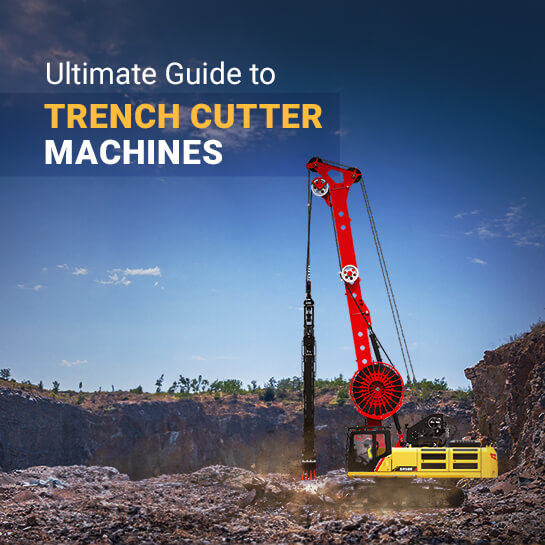
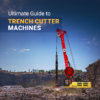
The Complete Guide to Trench Cutter Machines
When a construction site requires the excavation of deep trenches, such as those reaching depths of 120 meters with precision, traditional excavators are not sufficient. For these demanding tasks, you need a dedicated trench cutter machine designed specifically to dig deep trenches with accuracy and efficiency. Whether it's constructing diaphragm walls or laying foundations in challenging ground conditions, trench cutters offer unparalleled precision and effectiveness. In this guide, we will discuss trench cutters, their major applications, and the benefits that make them indispensable in today's construction industry. What are Trench Cutter Machines? Trench cutter machines are specialized pieces of equipment used in civil engineering and construction for creating deep, narrow trenches in various types of ground conditions. These machines are equipped with powerful cutting wheels or chains that can excavate hard soil, rock, and other dense materials with precision, making them essential for constructing deep foundations, slurry walls, and other subterranean structures. Major Applications of Trench Cutter Here are some major applications of trench cutters on the job site: Diaphragm Walls Trench cutter machines are extensively used in constructing diaphragm walls, which are essential for deep foundations in large buildings and infrastructure projects. Slurry Walls for Environmental Containment Trench cutters play a vital role in creating slurry walls, which are used to contain contaminants and control groundwater flow in environmental engineering projects. Foundations for Dams and Hydraulic Structures In the construction of dams and hydraulic structures, trench cutters are employed to create deep, narrow trenches that serve as foundations. Retaining Walls and Cut-off Walls Trench cutter machines are used to build retaining walls and cut-off walls, which are necessary for stabilizing slopes and preventing landslides. Underground Facilities and Tunnels For underground facilities and tunnel construction, trench cutters are utilized to create precise, deep trenches needed for the foundations and structural supports. Key Benefits of Using a Trench Cutter on the Job Site Here are some of the key benefits of utilizing trench cutter machines for construction project: Precision and Accuracy Trench cutter machines provide exceptional precision and accuracy in creating deep, narrow trenches. This ensures that construction projects adhere to exact specifications, reducing the risk of structural issues and costly rework. Efficiency and Speed The powerful cutting mechanisms of trench cutters enable rapid excavation of hard soil, rock, and other materials. This significantly speeds up the construction process, allowing projects to stay on schedule and reduce labor costs. Versatility in…
read more

Discovering the Various Types of Excavators and Their Contributions to Construction
arting a construction project without an excavator is like setting sail without a compass – it's possible, but certainly not recommended. These powerful machines excel in tasks ranging from digging foundations and trenches to loading and lifting heavy materials. However, their effectiveness is not one-size-fits-all, leading to the necessity of different types of excavators tailored to specific jobs and environments. From compact mini excavators ideal for confined spaces to massive hydraulic excavators suited for large-scale projects, each excavator type offers unique capabilities crucial for diverse construction needs. Furthermore, the wide range of excavator attachments further enhances their adaptability, enabling them to undertake numerous tasks with precision and speed. In this blog, we will explore various types of excavators and the different attachments used for excavator application. Types of Excavator Machines Here are various types of excavators used in construction sites: Wheeled Excavators Wheel excavators are distinguished by their wheeled mobility, offering exceptional speed and maneuverability, particularly suited for road construction and urban development projects. Equipped with rotating platforms, arms, and buckets, they efficiently dig, lift, and move materials across varied terrain. Their ability to navigate paved surfaces and uneven ground makes them versatile for a range of construction projects. Application: Ideal for road construction, urban development, and applications requiring quick mobility. Long-Reach Excavators Long-reach excavators, featuring extended arms and booms, are specialized machines designed for deep digging, dredging, and demolition tasks. Their extended reach capabilities enable access to difficult areas such as deep trenches and tall structures, maintaining stability and control while operating at extended distances. They are valuable assets in projects involving waterway maintenance, bridge construction, and selective demolition. Application: Useful in tasks requiring deep excavation, dredging, or demolition work. Mini Excavators Mini excavators are smaller and lighter versions of standard excavators, designed to minimize ground damage and navigate crowded, narrow sites with ease. They often feature reduced tail-swing or zero tail-swing configurations, allowing them to maneuver tight turns and avoid obstacles effectively. Application: Frequently used in parking lots, indoor spaces, and other cramped sites where standard excavators may not fit. Small Excavators Small excavators are compact yet powerful machines designed for small to medium-sized projects. They offer excellent versatility and efficiency, making them suitable for a wide range of tasks in confined spaces. Application: Ideal for utility work, residential projects, and landscaping tasks. Medium Excavators Medium excavators strike a balance between size and power, providing robust performance for…
read more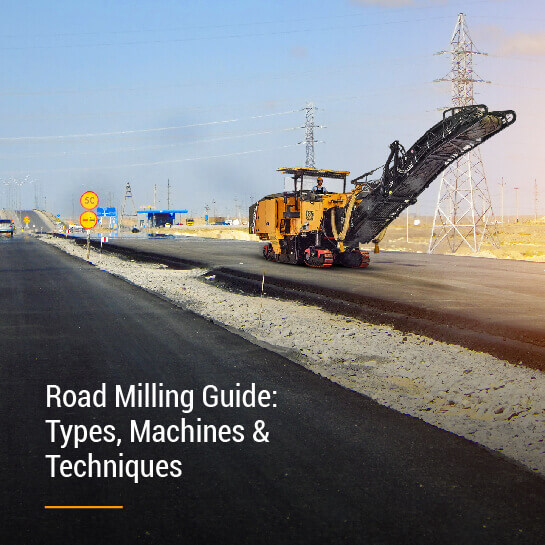
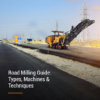
The Ultimate Guide to Milling in Road Construction
Road construction is a complex process that requires precision at every step to ensure the durability and safety of the finished roadways. One of the critical steps is milling, a technique used to remove the top layer of existing pavement. This task is performed by specialized milling machines, designed to prepare the surface for new asphalt effectively. In this blog, we cover everything you need to know about milling in road construction, from the benefits and processes to choosing the right road milling machine for your project. What is Milling in Road Construction?(H2) Milling, commonly known as cold planing, is a fundamental process in road construction that involves the removal of the top layers of existing asphalt. This method is crucial for paving the way for new material, ensuring that the addition of new layers does not increase the pavement's overall height. By stripping away worn, damaged, or deteriorated asphalt, milling provides a smooth, even surface essential for the new asphalt to adhere properly. This technique not only prepares the roadbed for resurfacing but also helps maintain the original engineering integrity of the roadway. Advantages of Milling in Road Construction Milling in road construction brings a multitude of advantages, making it a preferred method for maintaining and upgrading roadways. Here are the key benefits outlined in more detail: Road Maintenance: Regular milling helps remove cracks, ruts, and other surface defects that can lead to larger structural issues if left unaddressed. It is an integral part of preventative maintenance that keeps roadways safe and functional. Correcting Surface Irregularities: Milling allows for the correction of uneven surfaces and imperfections. This levelling effect is crucial for the longevity and drivability of the road, ensuring a smooth ride for vehicles. Improving Skid Resistance: By removing the smooth, polished top layer of asphalt that can make roads slippery, especially in wet conditions, milling helps to increase the roughness of the road surface, thereby enhancing skid resistance. Extending Roadway Life: By allowing for the placement of new asphalt over a sound base, milling extends the overall life of the roadway. This refreshed surface can better withstand the rigors of daily traffic and environmental conditions. Cost Efficiency: Milling is cost-effective as it allows the recycled materials to be reused in the new asphalt mix, reducing the need for new materials and minimizing waste. Recycling of Old Materials: Milling promotes environmental sustainability by recycling the removed asphalt, which…
read more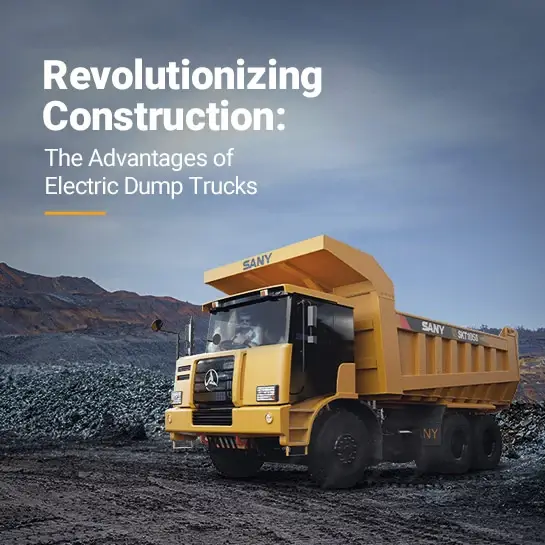
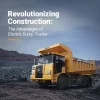
Revolutionizing Construction: The Advantages of Electric Mining Dump Trucks
Innovation often leads the charge towards efficiency and sustainability, and this holds true in the realm of construction as well. Among these advancements, electric mining dump trucks stand out as game-changers. These trucks not only aid in transporting materials but also significantly impact the environment and project efficiency. Let's delve into their significance and how they are reshaping mining at construction sites worldwide. What Are Electric Dump Trucks? Electric dump trucks are a revolutionary adaptation of the traditional heavy-duty vehicles used in construction. They swap conventional diesel engines for electric motors powered by batteries, significantly reducing emissions and noise levels. These trucks boast robust designs and are tailored to handle the rugged demands of construction sites. From excavation to site development, electric dump trucks streamline logistics, enhancing productivity on construction projects of all scales. When applied to mining operations, these trucks facilitate efficient logistics and bolster productivity across various mining operations, from excavation to material transportation. The Multifaceted Advantages of Electric Dump Trucks in Mining Electric mining dump trucks offer a myriad of advantages beyond just environmental benefits. Their impact extends to enhancing performance metrics and bolstering financial efficiency within construction operations. Let's explore how these versatile vehicles combine sustainability with superior performance. Exhaust Emissions Reduction: Electric dump trucks eliminate emissions entirely, contributing to cleaner air and reduced pollution levels. Noise Pollution Reduction: Operating quieter than diesel trucks, electric models minimize disturbances to surroundings and enhance the working environment. Greenhouse Gas Emission Reduction: Studies indicate electric dump trucks can cut greenhouse gas emissions by up to 60%, aiding in combating climate change. Energy Efficiency: Electric trucks are more energy-efficient, utilizing electric motors powered by rechargeable batteries, reducing operational costs. Power and Torque: Electric motors provide instant torque, delivering impressive performance and acceleration compared to diesel engines, improving productivity. Low Maintenance: With fewer moving parts and simplified drivetrains, electric dump trucks require less maintenance, reducing downtime and costs, and further enhancing efficiency. Key Considerations When Choosing an Electric Dump Truck in Mining When selecting an electric dump truck for a construction project, several factors come into play. Load Capacity: Determines the truck's efficiency in transporting materials. Battery Range: Crucial to ensure the truck can cover the required distances in rugged mining environments. Charging Compatibility: Ensures convenient recharging options. Total Cost of Ownership: Evaluates all expenses associated with the truck's lifespan, including maintenance and energy costs specific to mining operations. Automatic Transmission:…
read more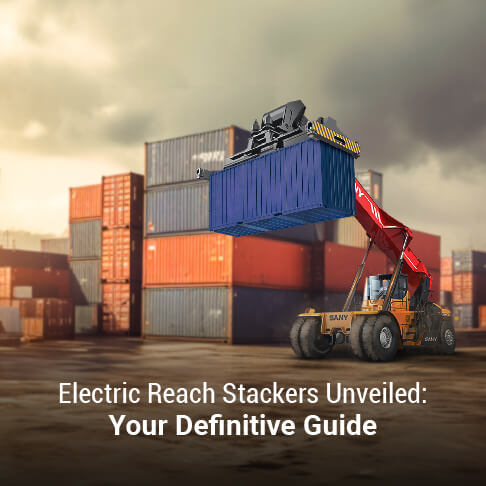

Electric Reach Stackers Unveiled: Your Definitive Guide
Navigating the complex landscape of warehouse management and logistics demands the right tools, and electric reach stackers stand out as a pivotal solution for efficient and sustainable operations. Selecting the ideal reach stacker is key to enhancing handling capabilities, reducing operational costs, and achieving remarkable efficiency in the stacking and storage processes, ultimately leading to improved workflow and customer satisfaction. In this definitive guide, we will explore the innovative world of electric reach stackers, detailing their essential functions, features, types, applications, selection criteria, benefits, and more. Join us as we unveil the powerful impact these machines can have on modern logistics, helping businesses thrive in an increasingly competitive environment. Overview of Electric Reach Stackers Electric reach stackers have evolved from their manually operated and combustion engine-powered predecessors to highly efficient, electrically powered machines. These stackers are essential for handling heavy loads in confined spaces, offering enhanced maneuverability and storage capabilities. They are equipped with extendable arms or booms, allowing them to reach higher and stack more effectively than traditional forklifts. Key Features and Technological Advancements Electric reach stackers are continually evolving, driven by technological advancements that elevate their efficiency and utility. These machines are not just about lifting and moving cargo; they represent a convergence of engineering excellence and innovative technology. Here’s a look at some key features that make them indispensable in modern logistics: Advanced Battery Technology: The heart of an electric reach stacker lies in its battery system. Equipped with state-of-the-art lithium-ion batteries, these machines benefit from longer operational lifespans and the ability to recharge quickly. This not only ensures a seamless workflow but also minimizes downtime, boosting overall productivity. Additionally, the reduced energy consumption aligns with the growing trend towards sustainability in industrial operations. Sophisticated Automation Features: Automation in electric reach stackers is a game-changer. With automated steering and precise lifting controls, these machines offer unparalleled accuracy and ease of operation. This technology not only speeds up the handling process but also significantly reduces the manual effort required from operators, leading to a safer and more comfortable working environment. The automation extends to include features like programmable job routines and diagnostics, which help maintain high efficiency and predictability in operations. Enhanced Energy Efficiency: Modern electric reach stackers are designed with energy efficiency at their core. The integration of electric motors significantly cuts down on energy expenditure, which is a crucial factor in today's energy-conscious world. This efficiency…
read more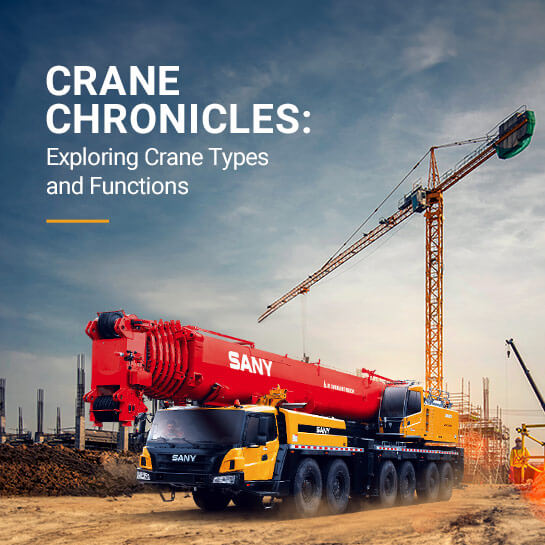
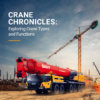
Crane Chronicles: Exploring Crane Types and Functions
Cranes are indispensable in construction, playing a crucial role in shaping skylines, building landmark structures, and bringing massive infrastructure projects to life. While tower cranes are the most recognizable type, the world of cranes is diverse, with each type designed to meet the specific needs and challenges of modern construction. This blog explores the different types of construction cranes, highlighting their uses and how they contribute to the efficiency and success of construction projects. Mobile Cranes: Versatility on the Move 1. All-Terrain Mobile Cranes Equipped with robust tires and a sturdy chassis, all-terrain mobile cranes are designed to navigate various surfaces. Ideal for both urban centers and rough terrains, these cranes combine mobility with significant lifting capacity, ensuring accessibility and efficiency even in challenging conditions. 2. Rough Terrain Cranes Rough terrain cranes are tailored for outdoor environments where the landscape demands adaptability. With features like four-wheel drive and tires suited for off-road conditions, they excel in construction projects requiring a flexible yet powerful lifting solution. 3. Truck-Mounted Cranes Truck-mounted cranes bring an additional layer of convenience, being easily transportable over roads. This mobility is perfect for projects that require rapid setup and frequent relocations, making them a favorite for time-sensitive tasks. Mobile cranes are celebrated for their quick setup and ability to move effortlessly between sites, making them ideal for a variety of construction projects. Tower Cranes: The Sky-High Workhorses Tower cranes are the giants of the crane world, vital for the development of high-rise buildings. Their long horizontal jibs allow them to cover extensive areas, while their height and lifting capacity are essential for transporting heavy materials up to great heights. Engineered for both vertical and horizontal lifting, tower cranes are fundamental in constructing the modern urban landscape. 4. Crawler Cranes: For Heavy-Duty Lifting Crawler cranes, distinguished by their tracks, offer exceptional stability and mobility across difficult terrains. They are indispensable for large-scale construction like bridge building or wind turbine installations, where other crane types might falter. Despite their challenging transport and setup requirements, their robust design makes them a go-to for heavy-duty lifting. 5. Floating Cranes: Specialized for Marine Projects Floating cranes are essential for aquatic projects, from bridge construction to offshore oil rig services. Mounted on pontoons or barges, they are designed to operate effectively on water, providing stability and precise load handling in marine environments. 6. Telescopic Cranes: Flexibility and Reach Telescopic cranes, often truck-mounted, offer…
read more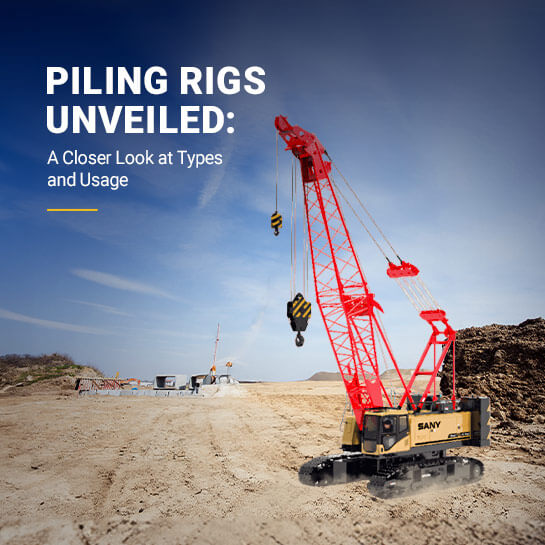
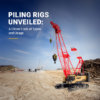
Piling Rigs Unveiled: A Closer Look at Types and Usage
Every construction project is a complex puzzle where the pieces must fit perfectly to ensure stability and durability. One of the foundational pieces of this puzzle is the piling rig, a crucial tool used in creating deep foundations for various structures. Understanding the different types of piling rigs and their specific uses is vital for any construction project, as it influences the overall success of the building process. In this blog, we will explore the various piling techniques in depth, focusing on their mechanisms, applications, and advantages. Understanding Piling Rigs Piling rigs are specialized construction equipment that drives piles into the soil to provide foundational support for buildings or other structures. The choice of piling method is dictated by several factors, including the type of soil, the load requirements of the structure, environmental constraints, and space availability. Types of Piling and Their Uses 1. Open Bore Piling: Open bore piling is an adaptable method suitable for a wide range of large and small construction sites. It involves drilling a deep, wide hole using a rotating auger, which is a tool that resembles a giant screw. The soil is excavated as the auger drills down to the required depth. Once the desired depth is reached, steel reinforcement cages are inserted into the hole, filling with concrete to form the pile. This method is particularly valuable in urban areas or near existing structures because it produces very little vibration, thereby minimizing the risk of damage to neighboring properties. It is commonly used in constructing basements and foundations where stability and minimal disturbance are paramount. 2. Continuous Flight Auger (CFA) Piling: CFA piling is renowned for its low noise and vibration levels, making it ideal for urban environments and close to sensitive structures. The process involves drilling into the ground with a continuous flight auger until the required depth is achieved. As the auger is withdrawn, concrete is pumped through the hollow shaft of the auger, filling up the space left by the auger and forming the pile. This method allows for quick installation and is effective in soft to medium-hard soil conditions. 3. Retaining Walls: In construction, retaining walls are essential for managing earth pressures in excavated areas. These structures are crucial in maintaining the integrity of the excavation and preventing soil collapse, particularly in projects involving deep foundations or basements. 4. Contiguous Bored Pile Walls: This type of wall is used…
read more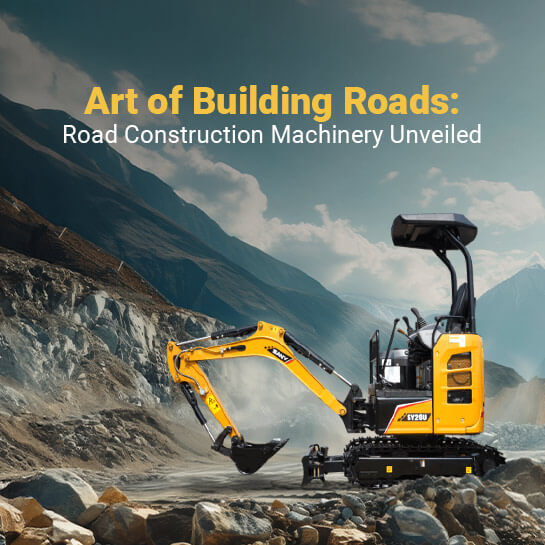

Driving Progress: A Guide to Selecting the Best Construction Machinery
According to a report by Bank of America Securities, India is set to construct more national highways in the decade up to 2025 than it did from 1950 to 2015 combined. The highway construction industry is projected to experience an impressive 133% growth by the year 2025. As the rate of road construction increases, the demand for road construction machinery will also rise. Understanding road construction machinery and its various types is essential as it allows for the effective use of equipment, resulting in smoother construction processes. These machines form the backbone of road construction, facilitating everything from excavation to paving and maintenance. Familiarity with different types ensures efficient project planning, execution, and, ultimately, the creation of safe and durable roadways. In this article, we'll discuss the various types of road construction machinery and what are the benefits of selecting the right machinery for the project. Types of road construction machinery Exploring the diverse range of road construction machinery is essential for understanding the intricate processes involved in building and maintaining road infrastructure. Here are some of the major types of road construction machinery: Asphalt Batching Plant: An asphalt batching plant, also known as an asphalt mixing plant, is a crucial facility in road construction for producing asphalt mixtures. It combines various aggregates, filler materials, and asphalt binder in precise proportions to create hot mix asphalt (HMA) used for paving roads, highways, and other surfaces. The plant typically consists of several components, including cold aggregate feeder bins, a drum dryer, a mixing chamber, hot bins, and a control system. Application: Asphalt batching plants are vital for producing high-quality asphalt mixtures used in road construction projects. They are used to manufacture various types of asphalt mixes, including dense-graded, open-graded, and stone matrix asphalt, to meet specific project requirements. Asphalt Pavers: Asphalt pavers are heavy equipment machines used to lay and compact asphalt pavement on roads, highways, and other paved surfaces. They receive hot mix asphalt from trucks and distribute it evenly across the surface using a screed or paving machine. Asphalt pavers come in various configurations, including wheeled and tracked models, with adjustable paving widths to accommodate different project specifications. They play a critical role in achieving smooth, uniform, and durable asphalt surfaces for road infrastructure. Application: Asphalt pavers are essential for laying asphalt pavements during road construction projects. They are used to pave roads, parking lots, driveways, and other paved…
read more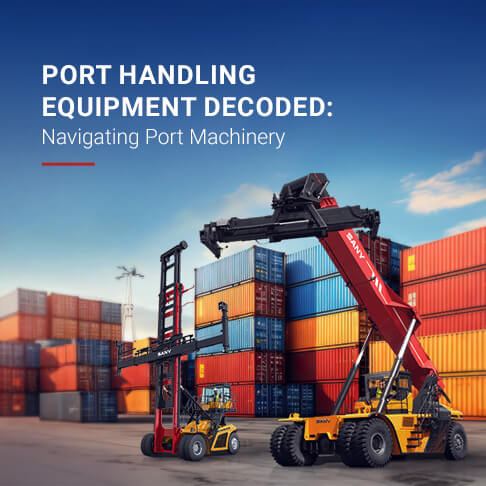
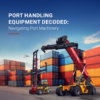
Smooth Sailing with Port Handling Equipment: A Complete Guide
Port handling equipment plays a crucial role in the efficient operation of ports worldwide. Without efficient port machinery, the movement of goods in and out of ports would be significantly hindered, leading to delays, congestion, and increased costs throughout the supply chain. These specialised machines are essential for handling cargo, facilitating logistics, and ensuring smooth operations within port facilities. In this blog, we will explore the significance of port-handling equipment, its key functions and practical tips for operating different types of equipment. What is Port Handling Equipment? Port handling equipment refers to a range of machinery and vehicles designed to handle cargo at ports. These may include cranes, forklifts, reach stackers, straddle carriers, and more. Each type of equipment serves a specific purpose in the logistics chain, contributing to the seamless movement of goods in and out of ports. Critical Functions of Port Handling Equipment The critical functions of port machinery are essential for the smooth operation of ports and the efficient movement of goods. Here are some key functions: Loading and Unloading Port handling equipment, such as cranes and forklifts, is responsible for efficiently loading and unloading cargo from ships, trucks, and trains. This process is crucial for ensuring timely delivery and minimising delays in the supply chain. Storage and Stacking Once the cargo is offloaded, port handling equipment like reach stackers and straddle carriers play a vital role in organising and stacking containers in port yards. Proper storage and stacking techniques optimise space utilisation and facilitate easy access to containers when needed. Transportation Terminal tractors, trailers, and other transport vehicles move cargo within the port area. These vehicles transport containers from the storage yard to loading areas, warehouses, or transportation hubs, ensuring that goods are efficiently routed to their destinations. Maintenance and Repairs Port handling equipment requires regular maintenance to ensure optimal performance and prevent breakdowns. Maintenance vehicles and tools are used to inspect, repair, and service equipment, minimising downtime and maximising operational efficiency. Safety and Security Port handling equipment is used to ensure the safety and security of both personnel and cargo. Equipment operators must adhere to strict safety protocols to prevent accidents and injuries, while security measures such as surveillance cameras and access control systems help safeguard against theft and unauthorised access. Environmental Considerations Modern port handling equipment is increasingly designed with environmental sustainability in mind. Electric-powered equipment and emission-reducing technologies help minimise the environmental impact…
read more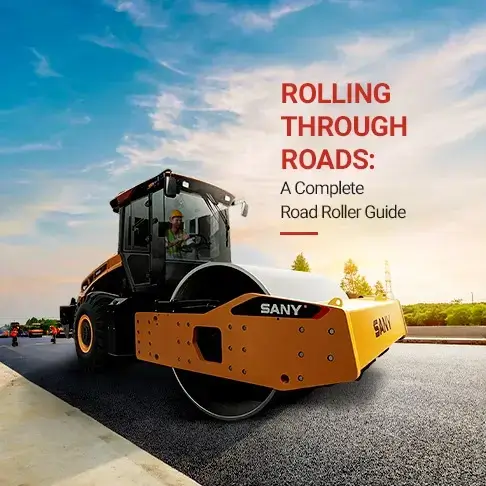

The Ultimate Guide To Road Roller: Types, Applications, And Maintenance Tips
Have you ever wondered how roads get that smooth, sturdy finish, we rely on every day? It's all thanks to road rollers – those big machines you see on construction sites. They may not be flashy, but they make sure the roads are safe and reliable. Whether you're new to construction or have been around the block, understanding road rollers is essential for getting the job done right. In this blog, we'll learn more about road roller machines, from the different types to simple maintenance tips. Types Of Road Rollers Road rollers come in various types, each tailored to specific tasks and terrain conditions. Vibratory Rollers Vibratory rollers are the powerhouses of road construction and repair projects. These rollers use vibrations to compact soil and asphalt, ensuring uniform density and smooth finishes. They operate by vibrating at high frequencies, causing the soil particles to rearrange and settle closely together. This compaction process creates a solid and stable foundation for roads, driveways, and other paved surfaces. Vibratory rollers are highly effective in compacting both granular materials and asphalt, making them versatile machines for various construction applications. They are often equipped with adjustable settings to control the intensity of vibration, allowing operators to achieve optimal compaction results based on the project's specific requirements. Pneumatic Rollers Pneumatic rollers differ from vibratory rollers because they employ rubber tyres instead of steel drums for compaction. These rollers provide greater flexibility and versatility, making them suitable for various applications. Pneumatic rollers are commonly used to seal and finish asphalt surfaces for excellent compaction and traction. Their rubber tyres conform to the irregularities of the surface, ensuring uniform compaction without causing damage to the pavement. Additionally, pneumatic rollers are effective in compacting cohesive soils and base materials. Their ability to adjust tyre pressure allows operators to fine-tune compaction efforts based on the specific conditions of the job site. Static Rollers Static rollers, also known as smooth-wheel rollers, exert pressure on the surface without employing vibrations. These rollers are typically used for finishing touches and compacting thin layers of asphalt or soil. Static rollers are ideal for achieving smooth and uniform finishes on paved surfaces, such as roads, parking lots, and driveways. They apply static weight evenly across the surface, gradually compacting the material beneath. Static rollers are often used with vibratory or pneumatic rollers to achieve optimal compaction results. While they may not offer the same level…
read more
